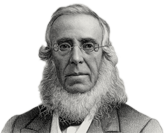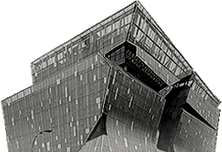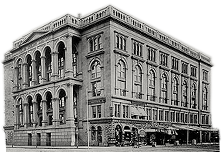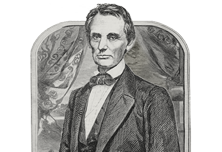Predicting Wildfires with Machine Learning
POSTED ON: February 6, 2025
As a child, Michael Bentivegna and his family often traveled to the western United States to experience the immense beauty of national parks like Yosemite and Sequoia. Those trips were part of the reason Bentivegna, a master’s student in the Albert Nerken School of Engineering, wanted to combine ecology with computer engineering for his thesis. Bentivegna, who earned his undergraduate degree in electrical engineering from Cooper in May 2023, wanted to combine theory with practical, real-world applications to address one of the most pressing environmental challenges of our time: wildfires. Bentivegna has developed a model designed to predict and map short-term wildfire risks.
As of now, while long-term fire risk assessments exist, they often fail to address the immediate dynamics of wildfire spread, especially in rapidly changing climate conditions. The unpredictable nature of wildfires and their fast-moving tendencies require a more agile approach. This is where Bentivegna’s research comes in.
Electrical engineering professor Sam Keene served as Bentivegna’s advisor. He says, “The data California uses for their wildfire models goes back 30 to 50 years and is updated only every few years. It is more of a long-term planning tool.” He points out that Bentivegna’s thesis works by using data that is freely available via Google Earth Engine, and that data is updated very regularly, every few days or weeks depending on the satellite. “As such, the model is able to quickly adjust for conditions on the ground.”
He began his research at the start of 2024, before the recent fires in Los Angeles County, but of course wildfires had already become an increasingly common and devastating occurrence. The intensity and unpredictability of these fires have intensified in recent decades due to factors like climate change, land mismanagement, and urban sprawl. Although the number of wildfires in the United States has not increased significantly since the 1980s, the amount of land destroyed has, the worst years on record occurring since 2004. The need for effective early-warning systems to predict and mitigate these disasters has never been more urgent.
Bentivegna’s thesis, titled “A Remote Sensing Approach to Short-Term Risk Mapping of California Wildfires” proposes a novel approach for forecasting wildfire risks. Unlike traditional models that rely on long-term averages for vegetation types, terrain, and historical fire data, Bentivegna’s model incorporates real-time environmental variables to predict fire risk over the next two years. His model leverages a combination of real-time satellite data, atmospheric conditions, moisture levels, and urban sprawl, providing a dynamic and responsive risk map that can be used proactively by emergency management teams and local governments to make timely decisions.
A significant portion of Bentivegna’s work focused on the incorporation of machine learning to enhance predictive accuracy. His machine learning component allows for real-time updates to the risk map, dynamically adjusting based on the latest available data. For his research, he used 2016 data to predict outcomes for the following two years. In practice, the model could be trained further on other years’ fire data, only increasing its precision. Bentivegna adds, “By continuously learning from new wildfires, the model’s predictions can improve over time.”
Bentivegna explains that the most challenging aspect of his research was the ability to predict wildfires with a high degree of accuracy in such a short timeframe.
In his thesis, Bentivegna compares the performance of his model against other existing wildfire prediction systems, demonstrating that a short-term model has an important element of flexibility and responsiveness. The model’s capacity to process and analyze real-time data gives it a distinct advantage over older, more static approaches.
Professor Keene explains: “For example if there’s a recent drought, Michael’s model will pick up on that and the risk would increase. If Michael gave you the close-up images of the Palisades region, you’ll see it was marked very high risk. Of course, the California state model also indicates this area was high risk. The difference is the time scale in which the models attempt to predict the risk.”
While there is much work yet to be done to make the model a functioning application for fire control organizations, the potential real-world impact of Bentivegna’s wildfire risk prediction model is significant. Keene adds, “With climate change upending previous assumptions, we think it’s important that models are able to predict on a more short-term basis so that people can be better prepared for emergencies like we saw recently in the Palisades Fire.” By incorporating short-term risk mapping into broader fire prevention and response strategies, it’s possible to mitigate some of the catastrophic damage caused by wildfires, safeguarding lives, property, and natural habitats.
Bentivegna wants to ensure that the landscapes he and his family visited will still be there for generations to come.







